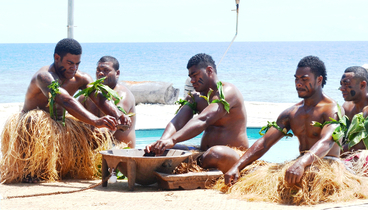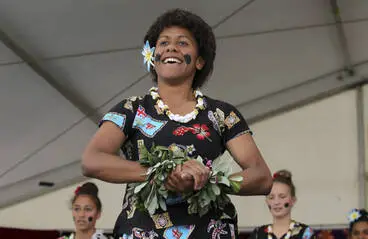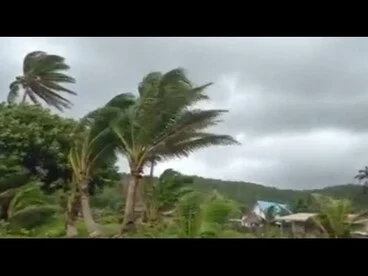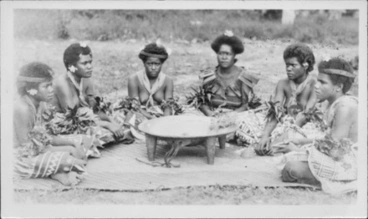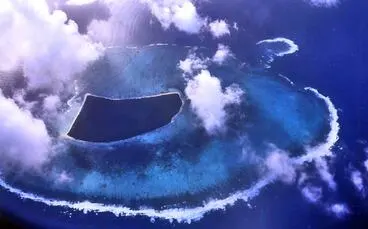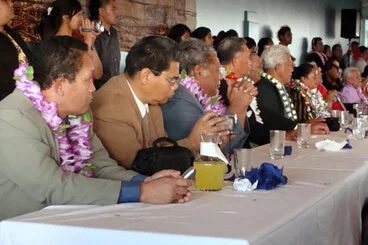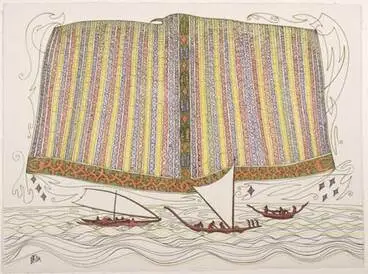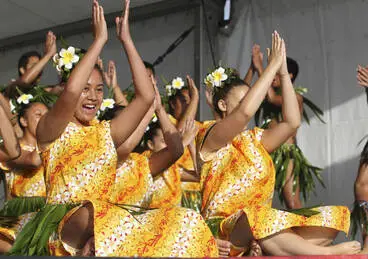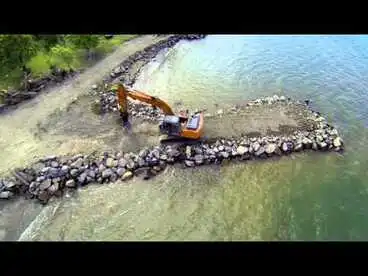Fiji
A DigitalNZ Story by National Library of New Zealand Topics
Fiji is an archipelago of more than 300 islands and a popular holiday destination in the Pacific. You find here a range of items related to Fijian history, customs, economy, including the impacts of climate change and New Zealand’s bilateral relations with this island nation. SCIS no. 5415857
Fijian women performing at the 7th Festival of Pacific Arts, Apia, Samoa
Alexander Turnbull Library
Fiji
National Library of New Zealand
Fiji language week
Services to Schools
Fijian Language Week resources
Services to Schools
Fijian language activity book
Services to Schools
Fijian Language Week begins in Aotearoa
Radio New Zealand
Ni Sa Bula Vinaka! Auckland Museum celebrates Fiji Language Week
Services to Schools
Fijian Kava Ceremony
Alexander Turnbull Library
Diversity stage performers at ASB Polyfest.
Auckland Libraries
The Fiji islands
Manatū Taonga, the Ministry for Culture and Heritage
Loss of Fijian oral culture
Services to Schools
Fiji Adventure - Part 1
AttitudeLive
Fiji's first capital becomes a World Heritage Area
Radio New Zealand
Real Pasifik - Series Two
NZ On Screen
The Fijian community
Manatū Taonga, the Ministry for Culture and Heritage
Raw footage: Cyclone Winston closes in on Fiji
Radio New Zealand
Widen Bainimarama inquiry, says Fiji forum
Radio New Zealand
Fiji tourism figures up for September
Radio New Zealand
Fijian and Gilbert Island Contingents - Pacific Islanders in the NZEF
Manatū Taonga, the Ministry for Culture and Heritage
Fiji to absorb customs in legislation
Radio New Zealand
Presentation of the Tambua or whale's tooth to troops, Fiji
Alexander Turnbull Library
Poster, 'Fiji By Air By Teal'
Museum of New Zealand Te Papa Tongarewa
Artist unknown :Friendly Fiji welcomes you [1950s?]
Alexander Turnbull Library
History of Fiji
Services to Schools
Nine legends from Fiji
Services to Schools
Fiji timeline
Services to Schools
Cooking Fijian Food with Lance Seeto
Services to Schools
The Fijian economy
Services to Schools
The culture of Fiji
Services to Schools
Fiji - empire outpost
Services to Schools
RNZAF in Fiji during WW2
Services to Schools
The Fiji national anthem
Services to Schools
New Zealand and Fiji on development cooperation
Services to Schools
The regulation of indentured labour to Fiji, 1864-1888
Services to Schools
Forestry certificate training in Fiji
Services to Schools
Fiji etiquette 101
Services to Schools
Don’t worry 'bout it
Services to Schools
Fiji and climate change
Services to Schools
Sinking countries fighting climate change
Services to Schools
Fiji: the challenges and opportunities of diversity
Services to Schools
Fiji, statistics and graphs
Services to Schools
Endangered Fijian crested iguana
Services to Schools
Fiji’s style of government
Services to Schools
Fiji remembers the Great War
Services to Schools
Fijian petrel – rare but not extinct
Services to Schools
Virtual Museum of Fiji
Services to Schools
Island legacy: A history of the Rotuman people
Services to Schools
Levuka is the old capital of Fiji. It was built on the Ovalu Islands as a trading port by the early Colonial Government around 1820. In 1871 Chief Seru Epenisa Cakobau crowned himself King. He made Levuka the capital of Fiji. The town managed to retain its original wooden architecture from the 1800s and is now listed on the UNESCO World Heritage List.
Levuka, Fiji
Alexander Turnbull Library
Fijian Indian farmers and boys
This photograph of Fijian and Fijian Indian farmers reflects the demography of Fiji. Indians were brought to Fiji by the British between 1879 to 1916 to work on sugarcane, coconut and cotton plantations. They were indentured labourers, bound for ‘girmit’, an agreement to work in Fiji for 5 years. The system of indentured labour stopped in 1920, but many of the Indians decided to stay and make Fiji their home. Today half the population of Fiji is made up of descendants of these Indians.
Alexander Turnbull Library
Nandi, the main international airport of Fiji, is located on the west side of the main island of Viti Levu. The airstrip, built in 1939 by New Zealand, was financed by Fiji’s British colonial rulers. The airstrip was used extensively during the Pacific War in 1941. New Zealand took control of the airport in 1946 and built its first runway. The airport was later taken over by the Fijian Government when they gained independence in 1970.
Nandi Airport
Alexander Turnbull Library
Hurricane at Fiji
Tropical cyclones are known to wreak havoc in Fiji during December, January and February. This report of a hurricane that hit Fiji in January 1904, was one of the worst experienced then. Today, Fiji like most islands in the Pacific are in the path of huge cyclonic storms that have increased in recent years due to climate change. Recently Cyclone Winston made landfall in Fiji on February 2016 with wind gusts around 200mph. Ironically Fiji had just become, in the same month, the first country to sign the Paris climate change agreement that was adopted by world leaders the previous year.
National Library of New Zealand
Loyal Fiji
When Britain declared war on Germany in 1914, it called on all its colonies to support its war efforts. To do their bit, British settlers in Fiji promoted a huge carnival and hoped that tourists from New Zealand would attend and help gather funds to help the Empire’s war efforts. On December 1914, the British Army Council telegrammed an acceptance of 60 recruits from Fiji, provided they were of British descent. The first contingent left for Britain in January 1915. They fought in the battles of Flanders. It was only in 1917 that native Fijians were accepted to serve in the British Army.
National Library of New Zealand
Vegetable market in Suva
These Fijian women queue patiently, baskets in hand, waiting for the vegetable market to open its doors. Suva’s vegetable market, now Suva’s Municipal Market was established in 1950. It is Suva’s major food supplier of dry goods, seafood, fruits, vegetables and other agricultural products. On Fridays and Saturdays, it houses around 3500 vendors who come from far and near to sell their produce.
Alexander Turnbull Library
Digital Pasifik
Services to Schools
Traditional fire walking in Fiji
Services to Schools
Living in two worlds
Services to Schools
Why do islanders celebrate Rotuma Day?
Radio New Zealand
Episode 5: Coup Culture (Fiji) | Untold Pacific History
Radio New Zealand
Calls for Fijian to be the official language of Fiji
Radio New Zealand
Pacific Navigation
DigitalNZ
